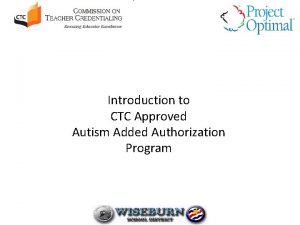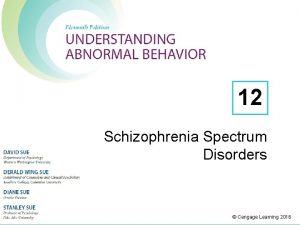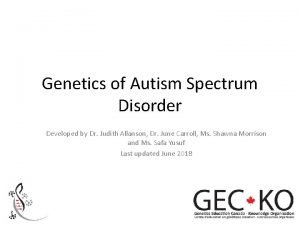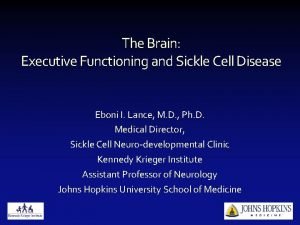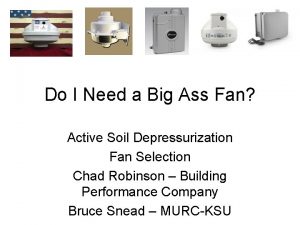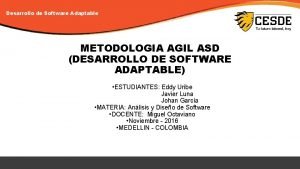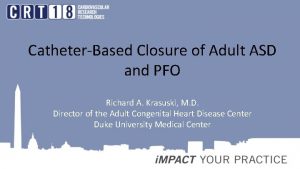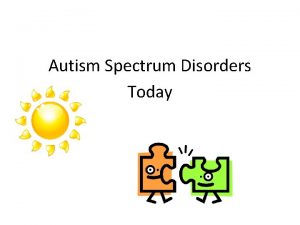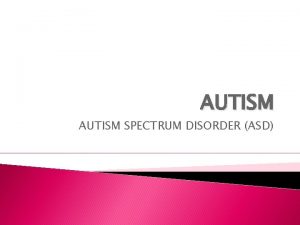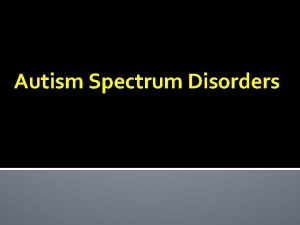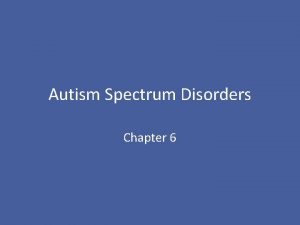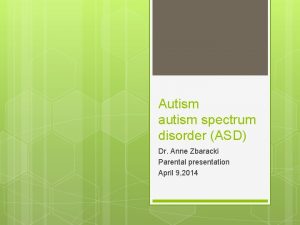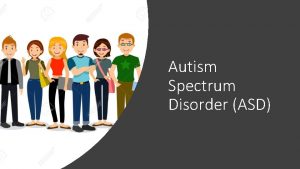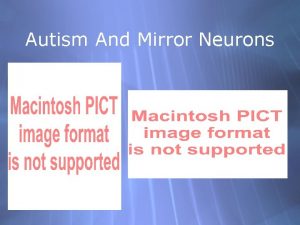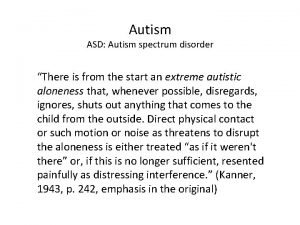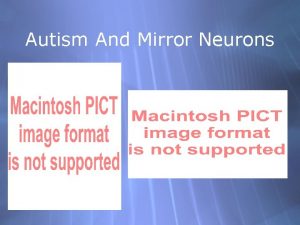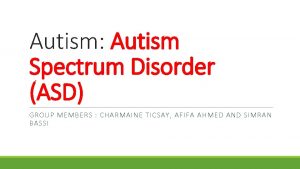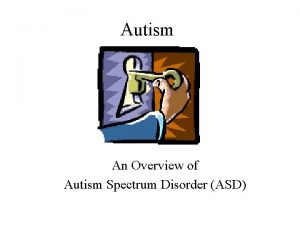Autism Spectrum Disorders ASD What is an Autism















- Slides: 15

Autism Spectrum Disorders (ASD)

What is an Autism Spectrum Disorder? ASD is a neurological disorder that typically appears by 3 years of age. 3 Areas of ASD we recognize within the school setting: Autism Pervasive Developmental Disorder- Not Otherwise Specified (PDD-NOS) Asperger Syndrome

3 Major areas of impact: Impairment in Socialization Restricted & Repetitive Behaviors Impairment in Communication

ASD Continuum… Impairments in Socialization Appears withdrawn Passive Active but Odd Difficulty making friends Impairments in Communication Non-verbal Gestures Verbal Uneven expressive / receptive language Stereotypical Behaviors Simple Complex Restrictive, repetitive nature

ASD Continuum… Cognitive Skills Severe Mental Handicap Gifted Measured Intelligence Sensory Hyposensitive Hypersensitive Varies in intensity and manifestation over time Motor Skills Awkward / Uncoordinated Agile / Coordinated


Why do students with ASD need to be included in the General Ed. Classroom? • In order to prepare all students for employment and independent living, students need Socialization Skills and Independent Functioning • Students with ASD don’t typically lose their job because of a lack of job skills…they typically lose their job because of a lack of socialization skills. • To develop socialization skills you must have social opportunities. • Research indicates that there are improved outcomes when students with ASD are integrated with their typical peers. This leads to Independence!

Sensitivity Awareness When you can see the two animals in this picture, please stand up.

Visual Processing Problems • How does it feel not being able to do something others can do easily? • It’s not always a motivational issue. • Anxiety and Pressure may lead to behavior problems. • Motivation vs. Ability Can the student do something or are they just tired of working so hard at something others do easily?

Turn the picture 90 degrees

Evidence Based Practices/Teaching Intervention Strategies Six of the 24 Evidence Based Practices (EBP’s) are listed below: • Video Modeling • Social Narratives • Visual Strategies • Self-Management • Prompting • Reinforcement NPDC http: //autismpdc. fpg. unc. edu/ OCALI, AIM website autisminternetmodules. org 37 modules presently available National Autism Center, National Standards Project(www. nationalautismcenter. org)

I am not “autistic. ” I am first, foremost, and always a person, a student, a child, and I have autism. Do not confuse me with my condition. And, please, do not use the term in a negative or inconsiderate way. I deserve to be respected.

Quick Tips to Effectively Support Students with ASD q IEP Snapshot q Autism 101 Handouts Included: q Ten Things Every Student With Autism Wishes You Knew q Asperger’s Syndrome Basics

Team Based Approach Duties of the team include: • Know the IEP Accommodations and Behavior Support Plan • Communicate regularly (weekly…daily if needed) • Meet as problems arise • Take issues to the team rather than the hallway or the teacher’s lounge • Contact the building administration for assistance

REMEMBER: Our Attitude Affects a Student’s Performance
 Ctc added authorization
Ctc added authorization Puberty and autism spectrum disorders
Puberty and autism spectrum disorders Chapter 12 schizophrenia spectrum disorders
Chapter 12 schizophrenia spectrum disorders Is schizophrenia on a spectrum
Is schizophrenia on a spectrum Asd levels
Asd levels What is autism
What is autism Is autism genetic
Is autism genetic Autism spectrum disorder adhd
Autism spectrum disorder adhd Orbital description
Orbital description Absorption spectrum
Absorption spectrum Big ass prof
Big ass prof Secundum asd
Secundum asd Asd metodologia agil
Asd metodologia agil Motorradclub bergamo
Motorradclub bergamo Asd
Asd Asdaha
Asdaha
